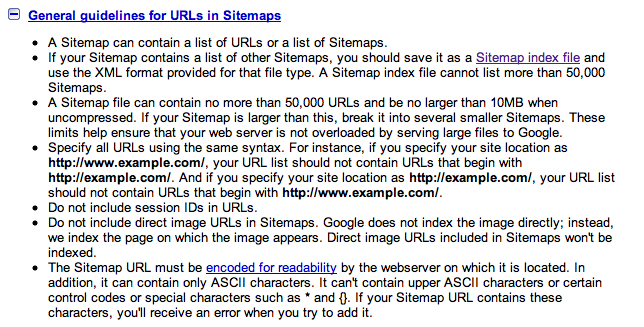A sitemap is like a table of contents page for a website, offering links to all pages on the site. These links are categorized and organized in hierarchical form, which makes finding them quite easy. When a visitor can't navigate her way to the page she is looking for, she can refer to the sitemap page to find it. Moreover, sitemaps help make your website more search engine friendly. By providing text- or XML-based links to key pages, the sitemap offers search engines a great way to index your website's contents.
Google's Sitemap Guideline and Format
Google is the most popular search engines out there today. So, most search engine optimization (SEO) efforts go into making your website Google friendly.
If you go through Google's Webmaster Guidelines you will find several references to website sitemaps. Google uses XML-based sitemaps. A couple of benefits of maintaining a Google-friendly sitemap are that Google will find changes to your website's structure faster than without a sitemap, and Google will pick up and display these changes as part of search results almost immediately. You can notice the difference between websites with and without a sitemap when you publish a new website. Google will index and display the links of a website with a sitemap significantly faster than it will index one without a sitemap.

Click here for larger image
Figure 1. Google Guidelines for URLS in Sitemaps
Another thing to note is the format in which Google expects its sitemaps to be in. Remember that if you have any errors in your sitemaps it could have the opposite of the desired effects on your SEO efforts. I think it's important for Web developers and SEO folks to be familiar with the formatting of the sitemaps, as this knowledge can be of help while debugging sitemap issues. Here's an example of a typical Google-friendly XML sitemap from Google guideline pages:


 Find a programming school near you
Find a programming school near you